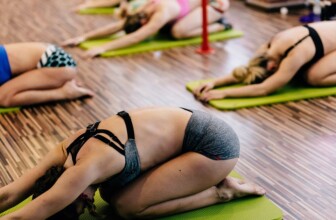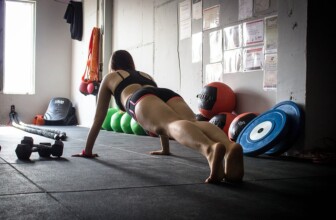Unlocking the Benefits of Red Light Therapy: A Comprehensive Guide to Healing and Wellness
Introduction
Red light therapy (RLT) is a promising treatment in the field of wellness and health. Emerging from the realms of photobiomodulation, RLT has garnered attention for its potential in promoting skin rejuvenation, tissue repair, pain relief, and a host of other benefits. This article aims to explore various facets of red light therapy, offering insights into its mechanisms, applications, real-life case studies, and future trends.
1. Understanding Red Light Therapy
Red light therapy involves exposing the body to low levels of red or near-infrared light. This therapy operates at specific wavelengths, typically between 600 to 1100 nanometers, which can penetrate the skin to stimulate various biological processes.
1.1 How Does It Work?
At the cellular level, red light therapy promotes mitochondrial function, resulting in increased ATP production. This process leads to enhanced cellular metabolism, enabling faster healing and regeneration.
1.2 The Biological Basis
Photobiomodulation is a key mechanism by which red light therapy exerts its effects. Research shows that light can influence cellular signaling pathways, resulting in anti-inflammatory responses, enhanced circulation, and improved collagen production.
2. Health Benefits of Red Light Therapy
The health benefits of red light therapy are vast and varied. Studies and clinical observations have highlighted multiple areas where RLT has proven advantageous.
2.1 Skin Rejuvenation
RLT can help in reducing wrinkles, eliminating acne, and improving overall skin tone. Its collagen-boosting effects have made it popular in dermatological treatments.
2.2 Pain Management
Chronic pain conditions such as arthritis, back pain, and tendonitis can be alleviated with regular use of red light therapy, as it aids in reducing inflammation and promoting healing.
2.3 Muscle Recovery and Performance
Athletes have increasingly utilized RLT to speed up muscle recovery, boost performance, and reduce fatigue levels after intense workouts.
2.4 Mental Health Benefits
Emerging studies suggest that red light therapy may also aid in alleviating depression and anxiety, possibly due to its positive effects on cellular energy production and mood regulation.
3. Applications of Red Light Therapy
Numerous settings are employing red light therapy, from beauty clinics to sports performance facilities and even at home.
3.1 Home Use Devices
Convenient devices are widely available for home use, allowing individuals to experience the benefits of red light therapy without visiting a clinic.
3.2 Clinical Applications
Many clinics now offer red light therapy as part of their treatment modalities, incorporating it into programs for skin health, pain management, and injury rehabilitation.
3.3 Veterinary Medicine
RLT is also gaining traction in veterinary applications, helping pets recover from injuries or surgeries, and improving their overall quality of life.
4. Scientific Evidence Supporting Red Light Therapy
A review of the scientific literature reveals numerous studies supporting the efficacy of red light therapy across different applications.
4.1 Clinical Studies
A systematic review published in the journal Photomedicine and Laser Surgery revealed significant improvements in skin health and wound healing associated with RLT.
4.2 Meta-Analyses
Meta-analyses of randomized controlled trials indicate a strong correlation between RLT and positive outcomes in pain reduction, particularly in musculoskeletal disorders.
5. Real-Life Case Studies
5.1 Case Study: Skin Health
A 45-year-old woman with severe acne saw remarkable improvement in her skin after undergoing a series of RLT sessions. Her acne scars began to fade, and her overall complexion improved significantly.
5.2 Case Study: Athletic Performance
An elite athlete in track and field reported enhanced recovery times and reduced muscle soreness after incorporating red light therapy into their training regimen. Performance metrics improved, leading to personal bests in competitive events.
6. Safety and Side Effects
While generally considered safe, it is essential to heat how users can mitigate potential side effects.
6.1 Notable Concerns
Skin irritation or discomfort may occur in sensitive individuals, but these effects are typically mild and transient.
6.2 Precautions
Individuals with specific medical conditions or those taking certain medications should consult healthcare professionals before starting red light therapy.
7. Frequently Asked Questions (FAQ)
Q&A Section
What is the ideal duration of a red light therapy session?
Most sessions range from 10 to 20 minutes, depending on the device and area being treated. It's advisable to follow manufacturer guidelines or consult a professional.
Can red light therapy be combined with other treatments?
Yes, RLT can often be used simultaneously with other treatments, such as topical therapies or physical therapies, enhancing overall treatment efficacy.
Is there any downtime after red light therapy?
There is typically no downtime; patients can return to their regular activities immediately post-treatment.
8. Future Directions and Research in Red Light Therapy
As research continues to advance in photobiomodulation, new areas of potential application are continuously being explored. The future may well see even more refined and targeted therapies for complex conditions.
8.1 Emerging Areas of Study
Studies are underway to explore the potential for using RLT in metabolic disorders, neurological conditions, and advanced age-related concerns.
8.2 Personalized Approaches
The integration of personalized medicine may allow for tailored red light therapy regimens optimized for individual patient needs and conditions in the years to come.
Resources
| Source | Description | Link |
|---|---|---|
| Photomedicine and Laser Surgery | A journal covering clinical studies related to light therapies. | Visit Journal |
| American Journal of Physiotherapy | Research and articles on physical therapy practices including RLT. | Visit Journal |
| WebMD | General information about health benefits and risks associated with various therapies. | Visit WebMD |
| PubMed | A comprehensive database of medical publications and research. | Visit PubMed |
Conclusion
In summary, red light therapy presents an innovative approach to enhance well-being, offering a variety of applications from skin care to pain management. Its safety profile and promising scientific backing make it a viable option for many individuals seeking holistic and non-invasive therapeutic alternatives. As research continues to evolve, the range of benefits, potential applications, and personalized approaches will likely expand. Individuals should remain informed and work with healthcare providers to explore RLT as part of their health and wellness journey.










